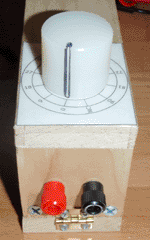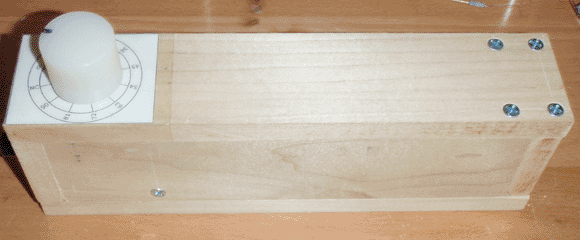

Lab power supplies are somewhat expensive, especially ones that supply more than 30 volts. They can also be easily damaged by high voltage, reverse current, or in some cases just by starting them under load. On the other hand, batteries are cheap (when bought online in bulk) and durable. I had been using a chain of 10 9-volt batteries as a power supply for some of my vacuum tube experiments, varying the voltage by adding or removing batteries from the chain, or by probing the connections between the batteries. This was cumbersome, so I made a battery box with a selector switch and banana terminals.



The box itself is made of poplar, which was very easy to work with and is comparable to plastic due to its fine grain and dimensional stability. The batteries contact diagonal copper strips within the box, which connect the positive end of one battery to the negative end of the next, and are compressed against these strips by three layers of tool drawer foam (visible in the second picture above). Wires run from each of these strips to the selector, which is a single-pole 12-throw rotary switch. I initially miscounted and thought it was an 11-throw switch, so one position is left unconnected. The banana terminals feed through the front of the box; the positive terminal (red) is connected to the switch, and the negative terminal (black) is connected to the first copper strip, seen in the bottom left corner of the battery area. Finally, the knob is made of nylon, with a groove cut in it by a threading tool held sideways in my lathe. It is oversized due to the long shaft of the selector switch; although it stands out visually, it is comfortable to use.
This design is somewhat flawed. It is difficult to get all 10 batteries to make good contact with the copper strips, and in fact the last battery eventually had to be spaced with a rolled up piece of tape, which can be seen above. Once the batteries are in place, however, they seem to stay that way. Still, spring contacts would have been a much better option.